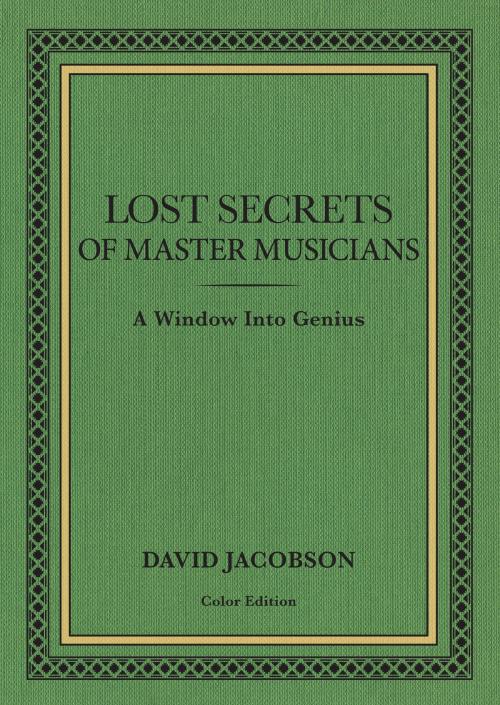Lost Secrets of Master Musicians
A Window Into Genius
Nonfiction, Entertainment, Music, Music Styles, Classical & Opera, Classical, Theory & Criticism, History & Criticism, Reference| Author: | David Jacobson | ISBN: | 9780996957922 |
| Publisher: | SFIM Books, Inc. | Publication: | December 6, 2016 |
| Imprint: | Language: | English |
| Author: | David Jacobson |
| ISBN: | 9780996957922 |
| Publisher: | SFIM Books, Inc. |
| Publication: | December 6, 2016 |
| Imprint: | |
| Language: | English |
What were the “secret” techniques and musical insights that enabled performers such as Jascha Heifetz, Nathan Milstein, Sergei Rachmaninoff, Vladimir Horowitz, and Glenn Gould to achieve such unsurpassed levels of musical expression and technical skill? And, if we could rediscover this knowledge, how might this impact musical education and our understanding, creation and performance of classical music?
David Jacobson, founder and director of the San Francisco Institute of Music, has spent many years analyzing the approach of these and other master players--uncovering their “secrets”--which he explains in clear, precise, non-technical language, supplemented by color diagrams, photographs and annotated musical examples. His conclusion: the methods and musical approach of these masters are often diametrically opposed to what is taught by contemporary music teaching systems (such as Ivan Galamian’s method and Suzuki’s beginner method) for string playing, orchestral instruments, piano and voice. However, Jacobson's exploration of the "secret" techniques and musical insights of great performers aims not only to transform music pedagogy, but to revitalize the art of classical music in general. The adoption of these concepts, he argues, could:
- Create many more outstanding performers and composers
- End the need for a conductor’s presence in orchestral performance
- Decentralize musical bureaucracies and power structures
- Alter our understanding of both opera and ballet
- Change our ideas about the nature of genius, talent and our own potentialities
What were the “secret” techniques and musical insights that enabled performers such as Jascha Heifetz, Nathan Milstein, Sergei Rachmaninoff, Vladimir Horowitz, and Glenn Gould to achieve such unsurpassed levels of musical expression and technical skill? And, if we could rediscover this knowledge, how might this impact musical education and our understanding, creation and performance of classical music?
David Jacobson, founder and director of the San Francisco Institute of Music, has spent many years analyzing the approach of these and other master players--uncovering their “secrets”--which he explains in clear, precise, non-technical language, supplemented by color diagrams, photographs and annotated musical examples. His conclusion: the methods and musical approach of these masters are often diametrically opposed to what is taught by contemporary music teaching systems (such as Ivan Galamian’s method and Suzuki’s beginner method) for string playing, orchestral instruments, piano and voice. However, Jacobson's exploration of the "secret" techniques and musical insights of great performers aims not only to transform music pedagogy, but to revitalize the art of classical music in general. The adoption of these concepts, he argues, could:
- Create many more outstanding performers and composers
- End the need for a conductor’s presence in orchestral performance
- Decentralize musical bureaucracies and power structures
- Alter our understanding of both opera and ballet
- Change our ideas about the nature of genius, talent and our own potentialities















